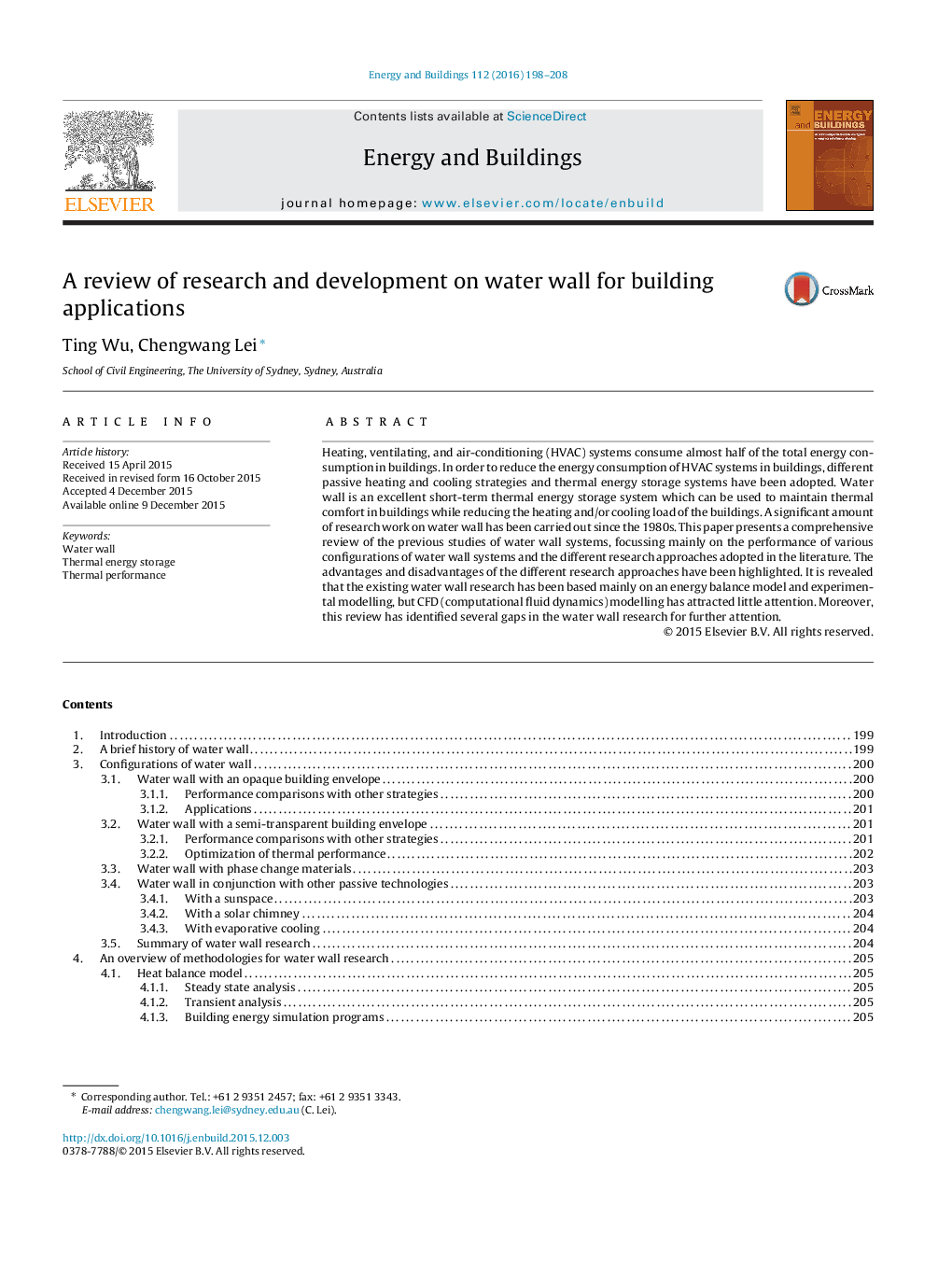| Article ID | Journal | Published Year | Pages | File Type |
|---|---|---|---|---|
| 6730587 | Energy and Buildings | 2016 | 11 Pages |
Abstract
Heating, ventilating, and air-conditioning (HVAC) systems consume almost half of the total energy consumption in buildings. In order to reduce the energy consumption of HVAC systems in buildings, different passive heating and cooling strategies and thermal energy storage systems have been adopted. Water wall is an excellent short-term thermal energy storage system which can be used to maintain thermal comfort in buildings while reducing the heating and/or cooling load of the buildings. A significant amount of research work on water wall has been carried out since the 1980s. This paper presents a comprehensive review of the previous studies of water wall systems, focussing mainly on the performance of various configurations of water wall systems and the different research approaches adopted in the literature. The advantages and disadvantages of the different research approaches have been highlighted. It is revealed that the existing water wall research has been based mainly on an energy balance model and experimental modelling, but CFD (computational fluid dynamics) modelling has attracted little attention. Moreover, this review has identified several gaps in the water wall research for further attention.
Related Topics
Physical Sciences and Engineering
Energy
Renewable Energy, Sustainability and the Environment
Authors
Ting Wu, Chengwang Lei,
